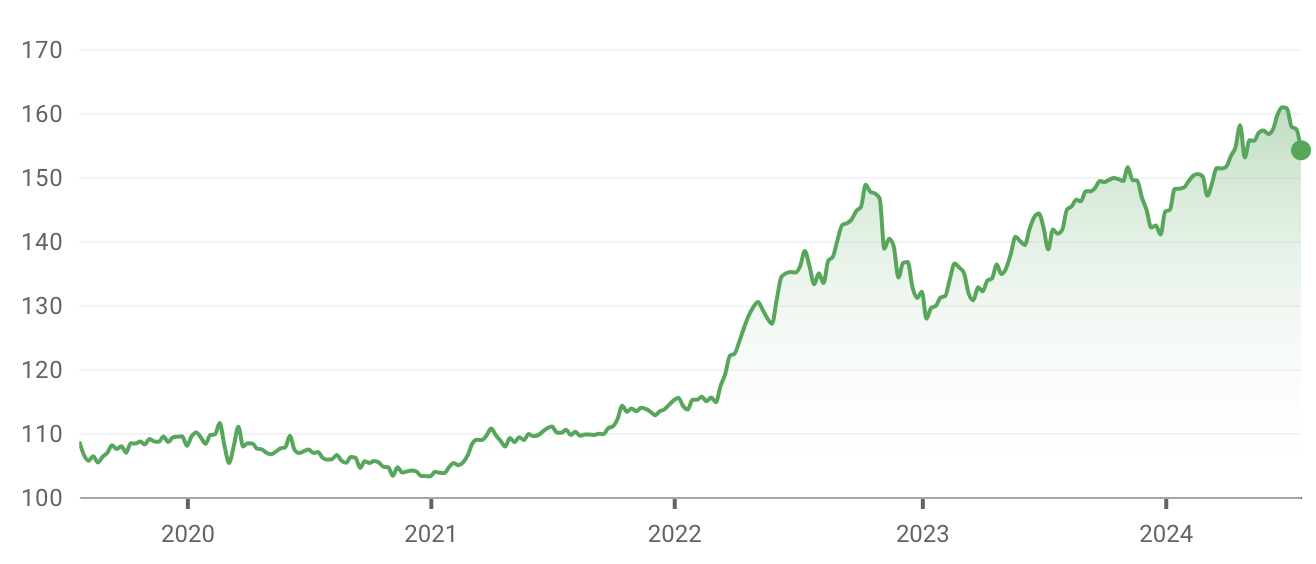
The yen’s downward spiral against the dollar has continued throughout 2024, so what will the market look like if the yen hits 200 USD? As a Japan-based logistics firm trying to navigate the waters of energy and labor costs from the ‘2024 Problem’, we are planning for what the market may look like around the corner.
At a superficial level, a weaker currency is perhaps easiest to understand in the same way your average consumers may deal with exchange rates on a day-to-day basis: travelling overseas. In Japan, many people will likely be feeling the exchange rate pinch by realising overseas travel is now more expensive and prohibitively so. Conversely, they’ll be well aware of the inbound travel boom in Japan—essentially the flip side to the same coin. Compared to the beginning of 2023 (~130:1), the yen is almost 25% weaker (~160:1) right now.

For businesses, the implications are much deeper. Stock market performance may look strong thanks to exporters increasing production to satiate higher demand from US importers attracted to cheaper goods. But adjusted for the currency differences, this growth is more negligible than not and, anyway, Japan’s import balance sheet is far less rosy.
The harsh reality is that Japan continues to face increasing import costs. As an island country, Japan is a net importer of goods which it must pay for in yen. From bananas to beef, it can mean the cost of doing business will go up for all kinds of businesses. But it also includes crude oil—which Japan will need more of to handle higher production.
Looking at higher energy prices alone, the government is hoping the counter-balancing effect of subsidies will help stimulate the economy and stabilise inflation.
Without stable energy prices, the higher cost of production would lead to price rises for consumers—who are already dealing with stagnant wages. Not all businesses could survive the impact of higher costs either, leading to bankruptcies for those firms unable to remain competitive, or unwilling or unable to pass on the cost to consumers. In logistics, where fuel is a major cost, firms are already trying to get to grips with the labor cost impact of the ‘2024 Problem’ regulation making it already a challenging environment to operate in.
Although subsidies can be met through a variety of measures, any reliance on printing money itself may risk further harm to the currency itself (yen-denominated assets would then be sold off to counter the effect of interest rate cuts if inflation follows money supply rises). To counter any depreciation, the government can also intervene by buying up Japanese yen—like it recently did to the tune of ¥3.5 trillion—to increase demand.
If the Japanese currency continues to depreciate and edges towards the ominous mark of 200 USD to the yen, all of the above effects will be compounded. The government and central bank’s finances will be strained and potentially the remedial effects it can rely on to stimulate demand would be more limited than even now.
Within logistics, we may see gradual changes to the net flow of goods and the resultant winners of that business. The increased need for overseas shipping from Japan will see a need for logistics suppliers to fulfil that demand. We might also expect to witness a shift towards domestically-sourced products, as previously cheap imports (like US beef) become less viable compared to local alternatives. With a weaker yen and heavy reliance on imports, Japan’s own self-sustainability may also come back into the political spotlight, with everything from nuclear energy policy to its workforce demographic all possessing a parallel relevance to Japan’s future.

